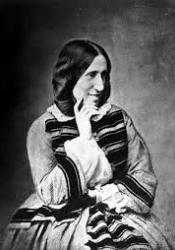Middlemarch, George Eliot
Middlemarch (1871) by Geroge Eliot is regarded as one of the most valuable contribuitons to literature for its complexity, moral inquiries, and innovation. Published in the Victorian period, the novel was inspired by the writings and work of writers such as Charles Dickens and Jane Austen. Virginia Woolf was a proud supporter of the novel though it recieved mixed reviews upon its release. Though it was initially published in a magazine through eight installments, it was officially published as a novel in 1871. Like Northanger Abbey, this novel touches on the intersections of romance and class. The most remarkable element of the novel is it's ending for the way that it doesn't necessarily insinuate happiness or closure like many novels that proceded it.
George Eliot did not begin writing until she was 37 years old. She began writing for a literary journal where she was encouraged by her longtime partner and friend to begin writing fiction. Middlemarch came toward the end of her career and tells the story of the protagonist, Dorothea who despite her tumultuous relationship with Causabon, distinguishes herself and demonstrates complexly feminist characeristics. The progression of events throughout the novel provide multi-faceted narrative not distinctly happy or distinctly tragic. This varried narrative and plot structure makes the novel significant for the history and the progression of the novel.
“History - George Eliot.” BBC, BBC, www.bbc.co.uk/history/historic_figures/eliot_george.shtml.
McCrum, Robert. “The 100 Best Novels: No 21 – Middlemarch by George Eliot (1871-2).” The Guardian, Guardian News and Media, 10 Feb. 2014, www.theguardian.com/books/2014/feb/10/100-best-novels-middlemarch-george....

